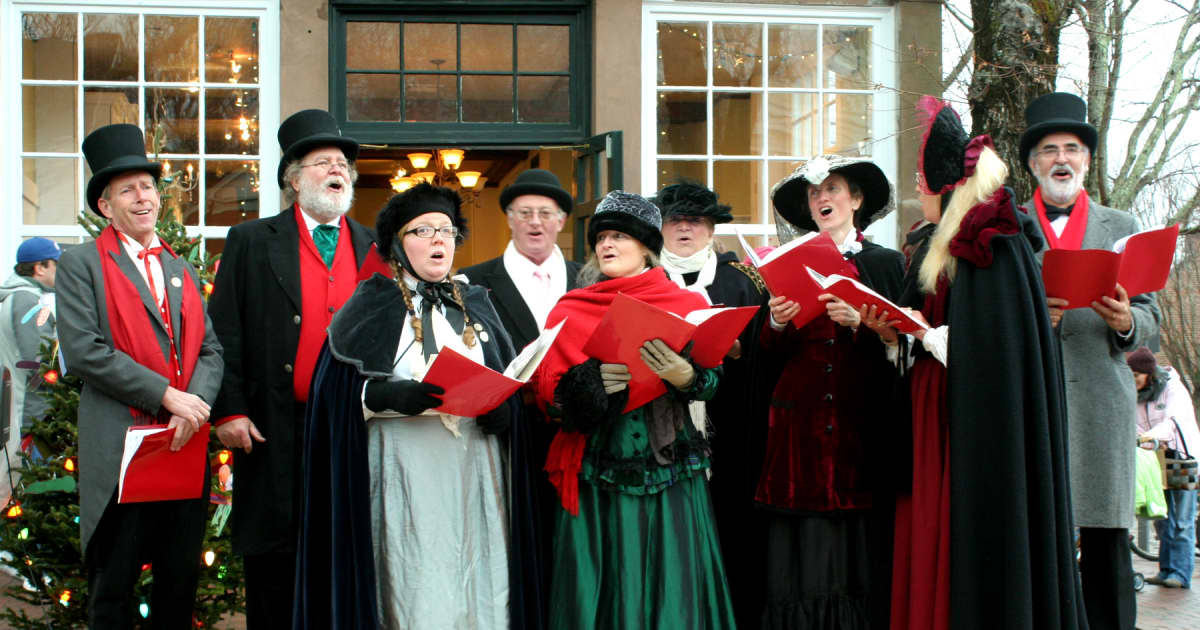
It’s Christmas Eve, 1914. World War I has been raging for several months. German soldiers and their British counterparts camped in France are huddled in their muddy trenches.
Suddenly the German side begins singing “Silent Night” in their native language. The British side claps and reciprocates, singing the same carol in English.
What followed this act of goodwill would become known in history as the Christmas Truce – a miracle, a sign of peace amidst horror, a reminder of humanity.
Along certain parts of the Western Front, groups of British and German forces cautiously stepped out of their trenches on Christmas Day, crossed the no-man’s-land area between both camps, shook hands and wished each other a Merry Christmas.
They exchanged gifts of cigarettes, hats, buttons, food and other such items they could muster. They also played games. This impromptu – and unofficial – cease-fire lasted through Christmas Day in some areas and through the new year in others.
And it all started with a Christmas carol.
Today, we hear holiday music at stores, on the radio, during parties and in churches. But what are carols? And why are they such a profound and impactful tradition?
Creating carols
Scholars believe carols can be traced back to pre-Christian Europe. These were “song-dances” associated with pagan religious rituals throughout the region.
“When Christianity took root in those places, those celebrations, dances and music got incorporated into how they celebrated their new Christian faith,” says Robert Dundas, associate professor of vocal studies and director of the FIU Opera Theatre at the School of Music.
Taking up old melodies and rhythms, Christians replaced their previous pagan lyrics for ones celebrating the birth of Jesus Christ and the Nativity story.
Christmas carols were born.
Dundas says that as early as the 13th century, priests—including Saint Francis of Assisi, who is credited with starting the tradition of live Nativity scenes—helped infuse hymns and tunes into Christmas worship, adding songs as part of Nativity plays.
These hymns were essential in spreading the Christmas message and helping people connect with their faith.
“The average person was not educated and could not read the Bible,” Dundas explains. “These mini-dramas helped them learn the Bible and the Nativity.”
Songs for the people
This aspect of bringing a spiritual message to the people – and making songs accessible to everyone – is the essence of carols, says Janet McDaniel, Honors College fellow and adjunct professor in the Department of Religious Studies, which is part of the Steven J. Green School of International & Public Affairs.
“It was an opportunity for the regular people to sing,” she explains. “By the 1600s, we have a whole tradition of people singing, knocking on neighbors’ doors. It didn’t matter if you were a good singer. It was a way to express your faith, devotion and belief system incorporating fun. It was just fun.”
McDaniel, who recently taught the global learning “Rhythms of the Sacred” course, says using songs to celebrate holidays is a global phenomenon. People from diverse cultures and religious groups across the world have used rhythm, movement and sound to share their deepest emotions and beliefs.
“Music is a means of religious expression,” she says. “Music is so deeply ingrained into what it means to be a human being. It was probably one of our first ways of expressing humanity. It’s hard to separate. Humans have rhythm. Humans sing. We like music, and it’s a primary means of our spiritual and religious expression.”
This legacy of Christmas carols has continued to be cherished by generations up to today – not to mention the life-changing impact it had on a group of soldiers at war in 1914.
So why do these songs continue to captivate us? How did one song help send a message of peace to the soldiers in those trenches?
“Communal singing is something that brings people together,” Dundas says. He still recalls gathering with his friends as a teenager and caroling for neighbors or going downtown to sing in stores – and hoping folks would treat them to hot chocolate and cookies for their performance.
McDaniel says modern Christmas songs like "White Christmas," "Jingle Bells" and "All I Want for Christmas Is You" also celebrate things humans appreciate – family, friends, home and solidarity.
“Music evokes memories,” she adds. “And most people have good memories of being home for Christmas as a kid. A lot of these songs bring them back to a happy childhood or thinking of home.”
For Dundas, a professional singer, singing Christmas songs also reminds him of some of the highlights of his professional singing career – and his own spiritual life: Singing George Frideric Handel’s Messiah and other Christmas music in cathedrals across Europe and the U.S.
“It really awes and inspires,” he says. “That great music allows you to worship in a personal way, supported by a big chorus and an orchestra It allows you to feel like you’re leading the worship, actively inviting other people to take part in that. This is a big deal spiritually. You have to prepare yourself to sing as a professional, but also if the Spirit moves, let it move you.”
"singing" - Google News
December 21, 2019 at 04:45AM
https://ift.tt/2ZcmXo3
Singing with joy: The story of Christmas carols - FIU News
"singing" - Google News
https://ift.tt/3503Waf
Shoes Man Tutorial
Pos News Update
Meme Update
Korean Entertainment News
Japan News Update
Bagikan Berita Ini

















0 Response to "Singing with joy: The story of Christmas carols - FIU News"
Post a Comment